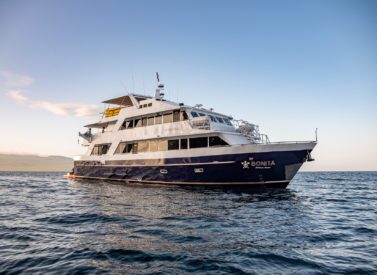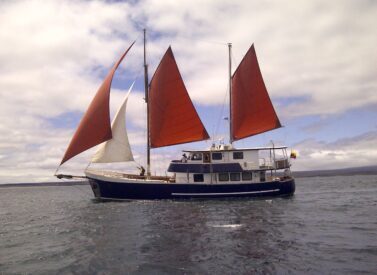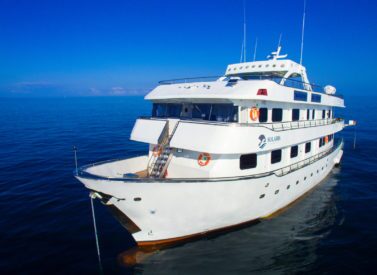
Galaxy Orion Galapagos Boat
Galaxy Orion Galapagos Islands boat: a charming cruise around the archipelago.
The Galaxy Orion is one of the best-value Galapagos Islands cruises, mixing style, comfort, fantastic itineraries, and welcoming crew.
Expert guides unveil the magical wildlife wonders of the Galapagos archipelago on cruise itineraries that visit the remote corners of this fascinating holiday destination. The Galaxy Orion has been recently renovated to make your cruise as comfortable as possible.
Up to 14 travellers from around the world can enjoy visits to iconic islands like Isabela, Floreana, and Española. Wildlife, including sharks, turtles, penguins, and sea lions, will undoubtedly accompany your journey on hikes, snorkels, or kayaking trips.
The Galapagos Islands are a natural wildlife paradise and a once-in-a-lifetime destination. Choose the Galaxy Orion for the best Galapagos cruise.
More about Galaxy Orion Galapagos Boat
Visiting the Galapagos Islands is to care for them. That’s why all passengers aboard the Galaxy Orion receive complimentary biodegradable shampoo, conditioner, and soaps so that all that’s left behind are footprints.
The Galaxy Orion’s eight crew keep the boat’s eight cabins in tip-top condition throughout. Between the fantastic excursions on land and sea, enjoy freshly prepared gourmet dishes from the boat’s talented chef.
Hikes across lava flows on Fernandina or the soft beaches of Española are just some of the highlights. Snorkel fans—fins, mask, tube and wetsuit included for free—will love the chance to swim alongside rays, turtles, fish, and sharks. There are also chances to kayak among the wildlife, too, to give a new perspective on the Galapagos’ wonderful marine and bird life.
There are morning and afternoon visits, with the chance to refresh and regain energy aboard with sumptuous breakfasts, lunches, and dinners. A day’s exploring of the Galapagos Islands is best enjoyed on the Galaxy Orion’s al fresco upper deck, offering 360 views of the stunning archipelago.
There’s a cosy salon and internal dining room, a bar, and buffet meals catering to most dietary requirements—please let us know in advance (vegan, vegetarian, gluten-free). And what’s more, there is Wi-Fi available so you can send photos to friends and family and make them wish they were here.
The Galaxy Orion offers an unforgettable Galapagos Islands cruise.
Read more about the Galapagos Islands
Here are some valuable blogs about travelling to the Galapagos Islands:
Trip Highlights
Print Share Download as PDF-
Galaxy Orion has three fabulous itineraries that explore the Galapagos Islands
-
Free use of kayaks, wetsuits, and snorkelling gear
-
Wi-Fi aboard so you can share precious memories
-
Recently refurbished cabins with private bathrooms and twin or double beds
-
Gourmet food provides tasty energy to explore the islands (vegan, vegetarian, gluten-free available)
-
One of the best value cruises across the archipelago
Thank you for organising the tour to the Galapagos for me—the tour overall was above expectations! Galapagos are was a great places to visit and we saw a lot.
The boat tours were overall well organised and the service level was good too, the atmosphere was pleasant and the activity level was great.
I had a great time & thanks again for a great trip!! I will recommend you to friends!
Christian Cornett, Galapagos Cruise, Mar 2024
Full Itinerary
Galaxy Orion: Itinerary B: Western and Northern Islands
Itinerary B: Western and Northern Islands
8 days (Sat-Sat)
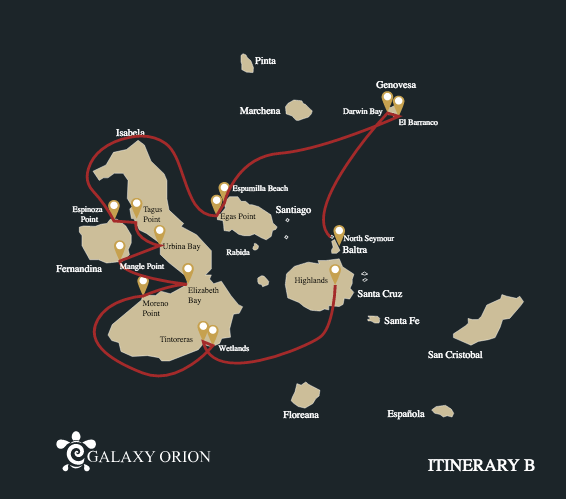
- Visit the spectacular Isabela’s stunning volcanic landscapes
- Head to the remote northern Genovesa
- Beautiful snorkels with fantastic marine life
Day 1 (Sat): Fly to Baltra – transfer to yacht - Santa Cruz: Highlands (L,D)
Your adventure in the mesmerising Galapagos Islands begins! Upon arrival at Baltra Airport, our National Park-certified naturalist guide will warmly welcome you and introduce you to the wonders of this pristine archipelago.
Santa Cruz Highlands
A bus ride will take you to the lush highland forests, home to the impressive Galapagos Giant tortoises, which can weigh up to 300 kg/600 lbs. Here, you’ll see these majestic creatures grazing or lounging in freshwater ponds. The highlands are also a haven for various bird species rarely seen in the lowlands. Depending on your itinerary, you may explore a lava tunnel and learn about the volcanic history of these islands.
Highlights: Giant tortoises, Darwin finches, barn owls, white-cheeked pintails, Galapagos flycatchers, lava tunnels.
Trail: 1-1.5 km / 0.6-0.9 miles
Activities: Dry landing and hiking
Day 2: Isabela: Tintoreras - Wetlands & Interpretation Centre (B,L,D)
Tintoreras
Begin your morning on Isabela Island with an adventure at Tintoreras, a group of small isles rich with wildlife. Sail through clear waters to uncover an underwater world teeming with white-tipped sharks, colourful tropical fish, and starfish. Snorkelling here allows you to swim alongside sea turtles, manta rays, and possibly Galapagos penguins.
Highlights: White-tipped sharks, sea turtles, manta rays.
Trail: 6 km / 3.7 miles
Activities: Wet landing, hiking, snorkelling
Isabela Island Wetlands & Interpretation Centre
In the afternoon, explore the wetlands of Isabela Island, a crucial ecosystem for the Galapagos’ biodiversity. Trails lead through mangroves, saline lagoons, and beaches, where you can spot flamingos and blue-billed ducks.
The day concludes at the Interpretation Centre, where you’ll learn about the natural and human history of the islands, conservation efforts, and ongoing protection measures.
Highlights: Wetlands, mangroves, flamingos, blue-billed ducks, Interpretation Centre.
Trail: 3 km / 1.86 miles
Activities: Hiking
Day 3: Isabela: Moreno Point & Elizabeth Bay (B,L,D)
Moreno Point
Start your day at Moreno Point, where extensive lava fields seem barren, but its brackish lagoons are full of life, including flamingos, gallinules, ducks, and herons. Look for penguins, marine iguanas, flightless cormorants, and shorebirds along the coast.
Highlights: American flamingos, ducks, gallinules, penguins, cormorants, marine iguanas, sea lions, Galapagos mockingbirds, and Darwin finches.
Trail: 1.6 km / 1 miles
Activities: Dry landing and hiking
Elizabeth Bay
In the afternoon, visit Elizabeth Bay, a sheltered bay surrounded by towering mangroves and barren lava fields. You take a dinghy tour to explore the channels, pools and coves teeming with wildlife like Galapagos penguins, flightless cormorants, blue-footed boobies, pelicans, rays, and sea turtles.
Highlights: Galapagos hawks, sea turtles, rays, Galapagos penguins, flightless cormorants, and herons.
Trail: 1.4 km / 0.8 miles
Activities: Panga ride
Day 4: Fernandina: Mangle Point - Isabela: Urbina Bay (B,L,D)
Mangle Point
Begin at Mangle Point on Fernandina Island, one of the most pristine islands. This spectacular mangrove ecosystem is a haven for wildlife. As your boat navigates through clear waters, observe the intricate mangrove roots where marine turtles and rays often hide.
Snorkelling here offers encounters with sea turtles, various rays, and abundant tropical fish.
Highlights: Mangrove ecosystem, sea turtles, rays, tropical fish.
Activities: Panga ride, snorkelling
Urbina Bay
In the afternoon, visit Urbina Bay, known for its dramatic uplift in the 1950s. Walk the trail to see small shells and corals, indicators of the area’s past submersion. You may encounter land iguanas and, in certain seasons, giant tortoises. Look out for Galapagos hawks soaring or perched in trees.
Highlights: Galapagos hawks, land iguanas, Galapagos mockingbirds, Darwin finches, and flycatchers.
Trail: Short trail: 1.2 km / 0.7 miles; Long trail: 3.0 km / 1.8 miles
Activities: Wet landing and hiking
Day 5: Isabela: Tagus Cove - Fernandina: Espinoza Point (B,L,D)
Tagus Cove
Once visited by Charles Darwin, Tagus Cove features a dry Palo Santo forest where Darwin finches and mockingbirds reside. Enjoy views of Darwin’s Lake and northern Isabela’s volcanoes. A boat tour reveals penguins, cormorants, marine iguanas, and the endangered Galapagos martin. Snorkelling here is rich with sea turtles, diverse fish, and penguins.
Highlights: Galapagos hawks, marine iguanas, flightless cormorants, herons, penguins, sea turtles, sea stars.
Trail: 2.6 km / 1.6 miles
Activities: Dry landing and hiking
Espinoza Point
At the base of an active volcano, Espinoza Point is a National Park gem. Hundreds of marine iguanas form the largest colony here. Also present are sea lions, flightless cormorants, herons, pelicans, oystercatchers, sea turtles, and shorebirds. In the mangroves, look for Galapagos hawks.
Highlights: Galapagos hawks, marine iguanas, flightless cormorants, penguins, sea turtles, sea lions, herons, oystercatchers, shorebirds, and Sally light-foot crabs.
Trail: 1.6 km / 1 miles
Activities: Dry landing and hiking
Day 6: Santiago: Egas Point - Espumilla Beach & Buccaneer Cove (B,L,D)
Egas Point
Despite its name, Puerto Egas has no port other than remnants from the colonisation attempts of the 1960s. A trail along the wildlife-rich coastline leads to “the grottos,” home to a small colony of endemic Galapagos fur seals. Land iguanas were reintroduced in 2019, so keep an eye out for these reptiles.
Highlights: Galapagos sea lions, Galapagos fur seals, oystercatchers, marine & land iguanas, Galapagos hawks, herons, shorebirds, Darwin finches, Galapagos doves.
Trail: 2.3 km / 1.4 miles
Activities: Wet landing and hiking
Espumilla Beach & Bucaneer Cove
Start your morning at Espumilla Beach on Santiago Island, known for its golden sand and mangrove forest. The beach is a nesting site for sea turtles and offers excellent swimming and snorkelling. Visit Buccaneer Cove, a historic site frequented by pirates and whalers, surrounded by high cliffs and tuff formations.
Highlights: Bobbies, oystercatchers, herons, Galapagos mockingbirds, Darwin finches, Galapagos hawks, sea turtles, snorkelling, historical pirate and whaler site.
Trail: 1.5 km (plus an extra loop of 1 km) / 0.9 – 1.6 miles
Activities: Wet landing, snorkelling, panga ride
Day 7: Genovesa: El Barranco - Darwin Bay (B,L,D)
El Barranco
El Barranco’s fractured lava cliffs are home to storm petrel colonies and short-eared owls. The trail alongside these cliffs reveals red-footed and Nazca boobies. You may spot Galapagos fur seals and numerous seabirds at the cliffs’ base.
Highlights: Nesting great frigatebirds, red-footed & Nazca boobies, Galapagos sea lions, Galapagos fur seals, lava & swallow-tailed gulls, yellow-crowned night herons, Genovesa ground finch, Genovesa cactus finch, Galapagos mockingbirds.
Trail: 1.2 km / 0.7 miles
Activities: Dry landing and hiking
Darwin Bay
Spend your afternoon at Darwin Bay on Genovesa Island, a birdwatcher’s paradise. The trail leads through colonies of sea lions, marine iguanas, night herons, Darwin finches, Galapagos doves, and mockingbirds.
Highlights: Nesting great frigatebirds, red-footed & Nazca boobies, Galapagos sea lions, lava & swallow-tailed gulls, yellow-crowned night herons, Genovesa ground finch, Genovesa cactus finch, Galapagos mockingbirds.
Trail: 1.2 km / 0.7 miles
Activities: Wet landing and hiking
Day 8 (Sat): North Seymour, transfer to Baltra airport, ends (B)
North Seymour
Your journey concludes with a visit to North Seymour Island, showcasing diverse Galapagos wildlife. The island hosts blue-footed boobies and frigate birds, offering a chance to witness the fascinating courtship dance of the boobies. The island’s coastline is excellent for observing sea lions and marine iguanas.
Reflect on your extraordinary experiences and incredible wildlife encounters as you journey back to the mainland of Ecuador. This concludes your remarkable journey through the Galapagos, leaving you with a deeper appreciation for the delicate balance of our planet’s ecosystems.
Highlights: Blue-footed boobies, frigate birds, sea lions, marine iguanas.
Trail: 2 km/1.3miles
Activities: Dry landing, hiking
Itinerary A+C: Eastern, Central, and Southern Islands
Galaxy Orion: Itinerary A+C: Eastern, Central, and Southern Islands
Itinerary A+C: Eastern, Central, and Southern Islands
- A+C: 8 days (Sat-Sat)
- C: 5 days (Sat-Wed)
- A: 4 days (Wed-Sat)
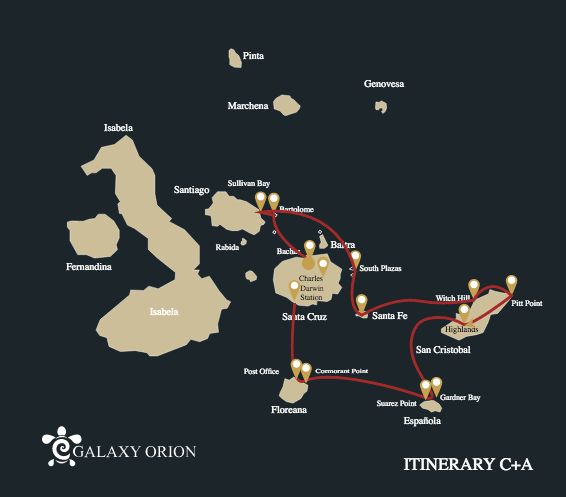
- Take in the iconic Bartolomé and Española
- Superb snorkels with penguins, turtles, and sea lions
- Albatrosses, red and blue-footed Boobies
- Visit mysterious Floreana and learn its tales
Day 1 (Sat): Fly to Baltra – transfer to yacht - Bachas Beach (L,D)
Your voyage to the captivating Galapagos Islands commences. Upon arriving at Baltra Airport, you’ll be greeted by our National Park-certified naturalist guide, who is ready to introduce you to the unique wonders of this pristine archipelago.
Bachas
Begin your exploration at Bachas Beach, named after the mispronounced “barges” left by the Americans during WWII. At low tide, the iron skeletons of the barges can still be spotted buried in the white sand.
From November to May, this area is one of the most crucial sea turtle nesting grounds in the Galapagos Islands. Several small saltwater lagoons are often home to flamingos, herons, and other aquatic birds.
Highlights: American flamingos, white-cheeked pintails, sandpipers, lava gulls, and blue-footed boobies.
Trail: 1.6 km / 1 miles
Activities: Wet landing and hiking
Day 2: Bartolome – Santiago, Sullivan Bay (B,L,D)
Bartolomé
Stand atop Bartolomé Island for unparalleled views of the lunar-like landscape, punctuated by scattered volcanic cones, Pinnacle Rock, and the bay of Sullivan. Bartolomé is a jewel in the Galapagos crown and home to a vibrant population of penguins.
Snorkelling experience: Swim or snorkel from the beach to explore an underwater playground teeming with penguins, a multitude of fish, colourful invertebrates, sea lions, turtles, rays, and reef sharks.
Highlights: Galapagos penguins, volcanic landscapes, Pinnacle Rock, blue-footed boobies, herons, sea lions, and sharks.
Trail: 1.5 km / 0.9 miles
Activities: Dry landing and hiking
Sullivan Bay
Step back in time at Sullivan Bay, an open book to the volcanic birth of these islands. Traverse the well-preserved Pahoehoe lava field, studying its delicate, unique textures. The seemingly lifeless landscape gradually unveils a resilience of nature, with pioneer plants, lava lizards, and tiny birds emerging on careful observation. Keep your eyes on the shoreline for resident penguins, pelicans, and oystercatchers.
Snorkelling experience: A dip in the water here contrasts starkly with the barren land. The coral sand beach and the dinghy access point reveal a marine world with fish schools, Galapagos penguins, reef sharks, turtles, and rays.
Highlights: Pahoehoe lava, Galapagos penguins, oystercatchers, and Galapagos hawks.
Trail: 2.2 km / 1.4 miles
Activities: Dry landing and hiking
Day 3: South Plazas – Santa Fe (B,L,D)
South Plazas Island
Begin your day with a visit to South Plazas Island, one of the smaller yet vibrant islands in the Galapagos. This island is renowned for its extraordinary flora, including towering cacti and the striking Sesuvium plant, which changes from green to bright red during the dry season.
South Plazas is also home to a large colony of land iguanas, often seen lounging under the cacti or wandering around. The steep cliffs on the southern part of the island provide a haven for various seabirds, including swallow-tailed gulls and red-billed tropicbirds. Sea lions frequent the coastline, offering an excellent opportunity to observe their playful antics in the water.
Highlights: Land iguanas, Sesuvium plants, cacti, sea lions, swallow-tailed gulls, red-billed tropicbirds.
Trail: 1 km / 0.6 miles
Activities: Dry landing, hiking
Santa Fe
In the afternoon, explore Santa Fe, known for its picturesque bay and turquoise waters, perfect for swimming and snorkelling. The island hosts a healthy population of the larger species of land iguanas unique to Santa Fe. Watch for these magnificent creatures as you walk through the giant prickly pear cactus forest.
The island’s calm, clear waters are ideal for spotting marine life, including sea turtles, rays, and colourful schools of fish. Santa Fe also offers a chance to see the Galapagos hawk and various endemic finches. This day provides a blend of terrestrial and marine exploration, showcasing the diverse landscapes and wildlife the Galapagos Islands are famous for.
Highlights: Santa Fe land iguanas, prickly pear cactus, sea turtles, Galapagos hawk, snorkelling opportunities.
Trail: 1.5 km / 0.9 miles
Activities: Wet landing, hiking, snorkelling
Day 4: San Cristobal: Witch Hill - Pitt Point (B,L,D)
Witch Hill
Start your day at Witch Hill, a breathtaking white sand beach on San Cristobal Island’s northern coast. This beach is one of the first sites visited by Charles Darwin. It’s an exquisite spot for walking and enjoying the scenery, with its powdery white sand and turquoise waters.
The area is home to a large sea lion colony, and the nearby lagoon often hosts several bird species, including pelicans and blue-footed boobies. The clear waters also make it an ideal spot for snorkelling, where you can encounter rich marine life.
Beach and snorkelling experience: Stroll along the white sands of Witch Hill, enjoy close encounters with sea lions, and explore the vibrant underwater world.
Highlights: White sand beach, sea lions, pelicans, blue-footed boobies, snorkelling opportunities.
Trail: 0.5 km / 0.3 miles
Activities: Wet landing, beach walking, snorkelling
Pitt Point
In the afternoon, head to Pitt Point, located on the eastern end of San Cristobal Island. This unique site is the only place in the Galapagos where you can see all three species of boobies and two species of frigate birds.
The trail here offers a challenging hike up a steep path but rewards with stunning coastline views. The beach area is also an excellent spot for snorkelling and swimming, offering a chance to see various marine life.
Hiking and wildlife observation: Explore the rugged terrain of Pitt Point and witness the diverse birdlife, including all three booby species and frigate birds.
Highlights: Three booby species (Blue-footed, Red-footed, Nazca), two frigate bird species, stunning views, and snorkelling opportunities.
Trail: 1.5 km / 0.9 miles
Activities: Dry landing, hiking, snorkelling
Day 5: San Cristobal: Highlands - Lobos Island (B,L,D)
San Cristobal Highlands
Your day begins with a journey to the highlands of San Cristobal Island, offering a different perspective of the Galapagos’ unique ecosystem. This lush and verdant area contrasts sharply with the coastal zones.
The highlands are home to various bird species, giant tortoises in their natural habitat, and a rich array of plant life, including endemic trees and ferns. You’ll have the opportunity to walk along paths that meander through this lush landscape, offering a chance to observe the giant tortoises up close and personal. The highlands also provide panoramic views of the island, showcasing its diverse topography.
Highlights: Giant tortoises, endemic bird species, panoramic views, lush vegetation.
Trail: Variable
Activities: Dry landing and hiking
Transfer day
The 5-day cruise ends after the Highlands visit, with a transfer to Baltra airport for a flight to Baltra.
The 4-day cruise begins today with a flight to Baltra airport and then a transfer into the Galaxy Orion for lunch. The trip then continues to Lobos Island and an afternoon visit.
Lobos Island
Venture to Lobos Island, a tranquil islet secluded from San Cristobal by a slim channel. This nature’s cradle, amidst a serene bay, is the playground for sea lion pups frolicking in tidal pools. The island might be modest but bursts with life, particularly with “lobos marinos” or sea lions.
As you step ashore, welcoming committees of sea lions greet you, only to be outshone by the male frigatebirds inland, presenting their inflamed red balloons amidst the verdant foliage. Stay vigilant for the blue-footed boobies nesting on the trails, ready to treat you to a display of their whimsical courtship dance.
Snorkelling experience: Dive into an underwater ballet at this renowned snorkelling spot, sheltered by the calm waves. Playful sea lions eagerly display their acrobatic prowess, while sea turtles and rays find solace resting on the sandy seabed, giving you a glimpse into the harmonious marine life that thrives beneath the surface.
Highlights: Galapagos sea lions, marine iguanas, magnificent & great frigatebirds, blue-footed boobies, and San Cristobal lava lizards.
Trail: 0.6 km / 0.4 miles
Activities: Dry landing and hiking
Day 6: Española: Suarez Point - Gardner Bay (B,L,D)
Suarez Point
Embrace the morning at Suarez Point. This rocky trail presents a natural gallery of the Galapagos Islands, brimming with an awe-inspiring array of fauna. Upon landing, you’ll be greeted by sea lions and marine iguanas, your first hosts in this nature carnival.
As you venture further, you’ll encounter a mosaic of seabird colonies – from the striking Nazca and blue-footed boobies to the elegant gulls and tropicbirds. The pinnacle of this journey brings you face-to-face with the waved albatross, the island’s largest bird (present from April to January). This majestic creature, exclusive to Española, will captivate you with its powerful flight and intricate courtship display.
Highlights: Sea lions, waved albatross, Galapagos hawks, Española mockingbirds, Darwin finches, marine iguanas, Nazca & blue-footed boobies, red-billed tropicbirds, swallow-tailed gulls, herons, lava lizards.
Trail: 1.7 km / 1.1 miles
Activities: Dry landing and hiking
Gardner Bay
Transition into the afternoon with a thrilling adventure to Gardner Bay, a pristine piece of paradise in the Galapagos archipelago. Sugar-white coral sands merge with crystal-clear turquoise waters, creating a tropical oasis. Watch as the beach becomes a theatre, starring sun-basking sea lions in a playful performance.
This idyllic setting invites you to stroll along the coast, immersing yourself in an enlightening experience as you delve into the biology of the endemic fauna – from the melodious Española mockingbird and the unique marine iguanas to the regal Galapagos hawks.
Snorkelling experience: Submerge beneath the azure waves to witness a spectacular performance choreographed by marine life. Swim alongside playful sea lions, graceful reef sharks, and gliding rays. Discover an array of fish, including vivid angelfish, charismatic parrotfish, dynamic damselfish, and the ever-busy surgeonfish colouring the underwater landscape.
Highlights: Coral sand beach, sea lions, Galapagos hawks, Española mockingbirds, Darwin finches, marine iguanas.
Trail: 0.8 km / 0.5 miles
Activities: Wet landing and hiking
Day 7: Floreana: Post Office Bay - Cormorant Point (B,L,D)
Post Office Bay
Begin your day by stepping into the footprints of the past at Post Office Bay, located on the enigmatic Floreana Island. This locale is imbued with tales from the late 1920s and ’30s involving German settlers, a baroness, unsolved mysteries, and captivating intrigue. The bay was a historic anchoring point for whalers, who journeyed to the highlands for freshwater and tortoises.
A mail system over two centuries old was established as a hub for visiting vessels centred around a barrel near the beach. This system endures today, offering a unique opportunity to send postcards from this remote part of the world.
Apart from its rich history, Post Office Bay presents natural attractions such as a scenic beach, a lava tunnel, and sea tours that can unveil sea lions, green sea turtles, shorebirds, small sharks, and, if luck permits, Galapagos penguins.
Snorkelling experience: Delve beneath the waves from the beach, opening up a mesmerising world of sea turtles, rays, and a diverse plethora of fish. Keep your fingers crossed for a special appearance by the elusive Galapagos penguin.
Highlights: Sea lions, sea turtles, finches, shorebirds, marine iguanas, and penguins.
Trail: 0.7 km / 0.4 miles
Activities: Wet landing and hiking
Cormorant Point
Shift your expedition northwards to Cormorant Point, renowned for its expansive coastal lagoon teeming with American flamingos, white-cheeked pintails, black-necked stilts, and other shorebirds.
This natural haven also features a pristine white sand beach, a crucial nesting ground for green sea turtles, and a newly established breeding ground for blue-footed boobies near the trail. Amidst this vibrant wildlife, also take the opportunity to admire the island’s unique flora.
Snorkelling experience: Snorkelling at Cormorant Point unveils a vibrant underwater world. Visitors swim among tropical fish, rays, sea turtles, and occasionally sea lions beneath crystal-clear waters. The unique olive-green sand beach adds a magical touch to this one-of-a-kind snorkelling experience.
Highlights: American flamingo, blue-footed booby, frigatebirds, tropicbirds, Galapagos shearwaters, sea lions, sea turtle nesting site, finches, shorebirds, coral-sand beach.
Trail: 1.6 km / 1 miles
Activities: Wet landing and hiking
Day 8 (Sat): Charles Darwin Station, transfer to the airport, ends (B)
Charles Darwin Station
Kickstart your final day on the cruise with a profound encounter at the Charles Darwin Station, a dedicated non-profit working hand-in-hand with the Galapagos National Park to safeguard the archipelago’s unique biodiversity.
This visit provides insights into the collaborative efforts of these institutions to shield native species and combat the invasive ones threatening the delicate balance of the Galapagos ecosystem. One of their emblematic endeavours includes the captive breeding of giant tortoises, an integral part of the conservation strategy.
Amidst the educational venture, enjoy the setting of an outdoor native dry forest adorned with towering cacti and a rich array of fascinating endemic flora. This is an ideal spot to discover various endemic Darwin finches, vivacious flycatchers, and melodious mockingbirds.
This visit concludes your unforgettable exploration of the Galapagos Islands, a journey filled with natural wonders and wildlife encounters that will leave a lasting impression and a deeper appreciation for the delicate balance of our planet’s ecosystems.
Highlights: Galapagos giant tortoise & land iguanas breeding program, Darwin finches, Galapagos mockingbirds, Galapagos flycatchers, yellow warblers.
Activities: Dry landing and gentle walk
Prices From $3,850 / £3,130 per person
What's Included?
Accommodation in a double or twin cabin, English-speaking naturalist guide, all meals from lunch on the first day to breakfast on the departure day, free purified water, tea, and coffee, visit as per itinerary, shared Galapagos transfers airport-boat-airport, snorkelling gear (mask, tube, and fins), wetsuits, kayaks, Wi-Fi, biodegradable shampoo, conditioner & soap
What's Not Included?
International flights, round-trip flights to the Galapagos Islands, Galapagos National Park fee, Galapagos Ingala fee, bus fares in Galapagos ($10 approx.), soft and alcoholic drinks (payable by card or cash), personal items, souvenirs, tips (payable in cash), travel insurance, personal items, Ecuador services.
Accommodation
Accommodation
There are eight cabins aboard the Galaxy Orion, each with a capacity for 14 people. Double cabins (7.85m2/85ft2) and twin cabins (10m2/107ft2) have comfortable beds, air conditioning, and private bathrooms with biodegradable shampoo, conditioner, and soap.
The dining room has three tables set for four people, and the boat’s talented chef serves delicious buffet-style international cuisine. The Galaxy Orion’s lounge is perfect for relaxing, with a TV and views, and the upper deck alfresco area is the best place to chill with a drink, unwind, and connect with nature.

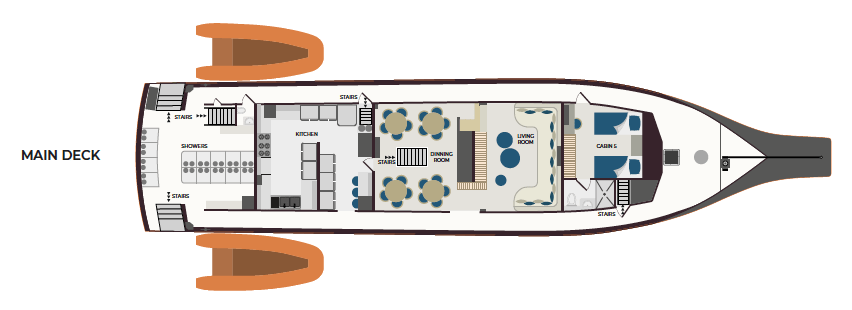

Tour Staff
The Galaxy Orion crew are “Galapagueños” guides, captains and crew members born and raised in the Galapagos Islands.
The Naturalist, English-speaking guides studied and were trained at Charles Darwin Scientific Station and have years of experience guiding in the Galapagos Islands.
Your onboard naturalist guide is undoubtedly the crucial pivot for your experience in the Galapagos. Galaxy Orion guides use their extensive experience to lead excursions, search for and identify species and point out interesting details. They also ensure your safety and compliance with indispensable conservation rules.
Above all, our guides share their knowledge, love and respect for the Galapagos’ stunning ecosystem. Their explanations (in English and Spanish) and fascinating stories about animal behaviour, intriguing ecosystems and survival strategies can bring nature even more to life in the field and during lectures or daily briefings aboard.
Nine crew aboard the Galaxy Orion will be looking after your needs in Galapagos.
Meals
Galaxy Orion’s chef prepares delightful traditional local and international dishes with vegan, vegetarian, and gluten-free options, using as many local ingredients as possible.
The restaurant is buffet-style. The food is healthy and delicious, and snacks and juices are served between meals. A bar (drinks not included) offers cocktails, wines, and beers.
Free drinking water is available in the lounge 24 hours a day.
Drinks bought at the bar (not included in the price) can be paid with USD cash or a card.
Note: Times of the meals are flexible and may vary to meet nature at its best.
Activity Level
The Galaxy Orion crew are “Galapagueños” guides, captains and crew members born and raised in the Galapagos Islands.
The Naturalist, English-speaking guides studied and were trained at Charles Darwin Scientific Station and have years of experience guiding in the Galapagos Islands.
Your onboard naturalist guide is undoubtedly the crucial pivot for your experience in the Galapagos. Galaxy Orion guides use their extensive experience to lead excursions, search for and identify species and point out interesting details. They also ensure your safety and compliance with indispensable conservation rules.
Above all, our guides share their knowledge, love and respect for the Galapagos’ stunning ecosystem. Their explanations (in English and Spanish) and fascinating stories about animal behaviour, intriguing ecosystems and survival strategies can bring nature even more to life in the field and during lectures or daily briefings aboard.
Nine crew aboard the Galaxy Orion will be looking after your needs in Galapagos.
Walks
Every visit to each island involves an easy or moderate walk, which can last between 2 to 3 hours and is not considered strenuous. The longest walk is around 1.3 miles/2km. On these walks, you will be led by an expert naturalist guide in a small group along clearly marked trails. They will explain in great detail all the wonders of our carefully selected itineraries. Most days, there are two guided walks on a specific island where you can walk and hike on beaches and lava fields alongside cliffs and around mangrove estuaries.
Snorkelling
Snorkelling in the Islands is the highlight of the Galapagos cruise for many of our guests. Samba provides fins, masks, and snorkel, plus long wetsuits for free.
You can go snorkelling almost every day. Some highlights include snorkelling with marine iguanas and playful sea lions, green sea turtles, penguins and an incredible variety of colourful reef fish. The water is a little colder on the western islands but teaming with life. There are beach snorkels for beginners and deeper waters.
Kayaks
Free two-person sea kayaks are available. The crew shadows you in a dinghy for your safety. The guide makes the final decision on whether and where kayaks can be put into the water.
Zodiac rides
Dinghies, or “Pangas,” as they are known in the Galapagos, are inflatable zodiacs that serve as the primary transportation method from our Galapagos yachts to the visitor sites. Several times during your week-long travel adventure, you can enjoy dinghy (or panga) rides through shores, mangrove estuaries, coves and caves.
Practical Information
Is this the cruise for me?
The Galaxy Orion offers excellent value for money alongside fantastic itineraries. It provides comfort, eco-credentials, fine food, and access to the Galapagos’ wonderful wildlife, with Wi-Fi, kayaks, and snorkelling kit included.
Introduction to Galapagos
These magical islands comprise of 50 volcanic islands of varying shapes and sizes, which lie 1,000 kilometres off the coast of Ecuador.
Here, unlike anywhere else on Earth, you can enjoy a thousand close encounters with a weird and wonderful variety of ‘friendly locals’, including giant tortoises, fur seals, sea iguanas, frigate birds and blue-footed boobies.
Read our Galapagos Islands Guide and more about diving.
In 1535, Tomás de Berlanga, Bishop of Panama, floated into this archipelago and named it Galapagos after the giant tortoises he encountered. Pirates used the islands for refuge and to bury their stolen treasure after that.
The islands’ most celebrated visitor was Charles Darwin, who arrived aboard the HMS Beagle in 1835. The rare life forms he encountered helped him formulate his theory of evolution, which he published in The Origin of Species by Means of Natural Selection.
It wasn’t until 1959 when it became part of Ecuador’s national park system that this fragile ecosystem with its rare and endemic species came under protection.
In 1979 the Galapagos archipelago was declared a UNESCO World Heritage Site.
Weather in Galapagos
When to visit Galapagos Islands: weather and wildlife
There is no real ‘best’ time to visit Galapagos on holiday as there is always wonderful wildlife and weather to enjoy. Read our blog for more.
Most animals – tortoises, sharks, sea lions and boobies – are found year round and many of the species here are non-migratory.
The Galapagos Islands are located right on the equator so air and water temperatures do not vary by much.
Having said that, there are two recognised seasons, and each months brings natural marvels for the visitor to enjoy.
Below is our quick guide to the weather and wildlife you can find on the Galapagos Islands.
General weather information
The warm season (Jan-Jun)
- Calm, clear warm waters, great for snorkelling, often without a wetsuit.
- Great weather, with February and March being the hottest and sunniest months with blue skies and sunshine.
- Occasional heavy bursts of rain in the afternoons.
Sea temperatures: 22-25°C / 72-77°F
Land temperatures: 21-32°C / 72-90°F
The dry ‘garua’ season (Jun-Dec)
- It’s a great time for marine life in the cooler seas. Snorkellers may want a wetsuit.
- August and September the coolest when you may need a jacket in the evenings and the sea can be choppy.
- There can be mist on the islands in the mornings (garua) which usually burns off by midday leaving overcast skies or a sunny afternoon.
Sea temperatures: 15-22°C / 60-72°F
Land temperatures: 18-24°C / 65-75°F

Air and sea temperatures in Galapagos, month-by-month
Galapagos cruise kit list
Good kit is vital for every trip.
Book with Andean Trails and get 15% off Páramo’s fantastic ethical and high performance outdoor gear.
Galapagos – general advice
Galapagos is warm and humid, and you will need t-shirts (moisture wick-away or breathable t-shirts can be very useful, it can get very hot in the day), shorts, lightweight skirt or trousers and bathing suits.
One or two cotton shirts can be used to protect you from sunburn, especially when snorkelling (not very elegant worn in the water over a swimsuit, but practical – and Galapagos is NOT an elegant place!).
You may want to change into different clothes for the evening, but don’t take anything dressy or smart – there really is a very relaxed atmosphere on board.
Pack something warm for going on deck in the early morning or evening a fleece, maybe, and a sweatshirt – and a waterproof for the Highlands.
Strong sandals, trainers, or light hiking boots are ideal footwear – you may like to have something suitable for easy walks and another for tougher terrain – your guide will advise you daily what the walking will be like. Most boats ask passengers not to wear heavy shoes on board.
Do take a hat!
Seasickness tablets if you think you will have problems – i.e. Sturgeon, or Mareol if you buy them in Quito. The sea can be choppy, so it is recommended to take them as a precaution.
Galapagos – detailed kit list
- First aid kit – aspirin, imodium, sun tan lotion (facter 50 recommended), sunburn cream, lip salve, throat lozenges, insect repellent, etc.
- Earplugs – the engine can be noisy, whatever the boat, wherever your cabin.
- Sun glasses and sun hat.
- Snorkelling equipment – the boat either provides kit for free or has a supply for hire, but it may suit you better to take equipment in your size that you know will fit you. Even if you have not snorkelled before, DO have a go – under water Galapagos is a very special experience. Try it first of all from the beach, to get the hang of breathing through gritted teeth, then take the plunge!
- Towel, for the beach (most boats provide these, please ask).
- Money belt.
- Passport, with at least 6 months remaining from date of return from Ecuador.
- US Dollars cash and mixed denomination notes, undamaged and unmarked.
- Visa/MasterCard, Cash card.
- Personal & Medical insurance.
- Camera and film / memory cards (take at least twice the amount you think you will need!). You may want to take an underwater camera for snorkelling.
- Camera charger
- Binoculars
- Small backpack – to keep your sun cream, water, shirt etc in when you are on shore.
- Small plastic water bottle, 1-2 litres, depending on how much you drink.
- Biodegradable sunblock (v. high factor, 50+ recommended) and lip salve.
- Toiletries (featuring biodegradable soap).
- Wet Wipes/antiseptic hand wash cream
- Travel alarm clock.
- Sewing kit.
- Spanish/English phrasebook.
- Book, e-book, mp3 player/ipod or other for free time.
The Galapagos Islands are a very fragile environment and the arrival of more and more inhabitants to the islands, as well as tourist have an impact.
Please try to minimise your impact by:
- Bringing a water bottle to refill, rather than using a new bottle each time.
- Recycling your rubbish where possible, not leaving any rubbish behind.
- Taking batteries back home with you – they cannot be recycled properly in Ecuador.
- Saving water where possible.
- Leave toiletries that contain microbeads at home
- Saving energy by switching your lights off when you leave the room. Electricity on the islands comes from a generator, fuelled by petrol. For this same reason, please think about whether you really need to use your air conditioning.
Quito
Pleasantly warm during the day, but can be quite chilly during the morning or at night when you might want a jacket or a fleece, plus a waterproof.
You may want to dress up a little more in the evening here, depending on where you are staying, and what sort of restaurant you like.
Guayaquil
Conditions here are similar to Galapagos – hot and humid. T-shirts and shorts in the day, and like Quito, something smarter for eating out in restaurants at night.
ATOL holiday protection
Andean Trails has 25 years of experience of putting together the best South America holidays.
We pay a fee to the CAA for every licensable passenger we book since we hold an Air Travel Organiser’s Licence granted by the Civil Aviation Authority. In the unlikely event of our insolvency, the CAA will ensure that you are not stranded abroad and will arrange to refund any money you have paid to us for an advance booking.
We also offer ATOL (Civil Aviation Authority) protected holidays to give our customers peace of mind when booking and travelling.
When you buy an ATOL protected air holiday package from Andean Trails Ltd you will receive a Confirmation Invoice from us confirming your arrangements and your protection under our Air Travel Organiser’s Licence number 6275.
You can read more about ATOL, who is covered and what protections you have if not ATOL-covered, on our ATOL page.
What is ATOL?
The CAA’s ATOL scheme offers protection to your money and your holiday if you book with us. Not everybody is covered (see ‘Who is covered?’ for more), as you must purchase an ‘air package holiday’ with Andean Trails to be protected.
And ‘air package holiday’ is defined as including a flight and some ground services (hotel, transfer, trek etc). This is also known as an ‘ATOL-protected holiday’.
Who is covered?
To be covered by ATOL, you must book a flight and some ground services with us and be from the UK. If you are from the UK and only book ground services and no flights, you are not covered by ATOL (see below for more on how non-ATOL clients are covered).
If you are outside the UK and buy flights with us, you will be ATOL protected IF any of the flights booked with Andean Trails touches/stops in the UK at any point during your holiday package booked with us.
If you buy your flights elsewhere, please check with that agent if you are ATOL protected. Be careful with online flight purchases and make sure you know what protection you have, if any, before paying for flights.
Not all holiday or travel services offered and sold by us will be protected by the ATOL scheme. Please ask us to confirm what protection may apply to your booking.
For land only holidays not involving any air travel, in accordance with “The Package Travel, Package Holidays and Package Tours Regulations 1992”, all UK passengers booking with Andean Trails Ltd. are fully protected for the initial deposit and subsequently the balance of all money paid to us, arising from cancellation or curtailment of travel arrangements due to the insolvency of Andean Trails.
I’m not ATOL covered, what protection do I have?
If you are not ATOL covered, any payments you make to us go to a Trust account.
We can only access this money once your tour has been completed, meaning that if anything happens to Andean Trails Limited while you are on holiday, then your money is secure and you can either complete the trip or be able to make it home.
If you pay for your holiday with a credit card, some offer payment protection – please check with your cardholder.
You also should have cancellation protection written into your insurance (which we recommend you have at the time of booking) in case you need to cancel.
Prices From $3,850 / £3,130 per person
2024
4 days: $1,500pp
5 days: $2,200pp
8 days: $3,500pp
2025
4 days: $1,650pp
5 days: $2,400pp
8 days: $3,850pp
Single supplement: +50%
Christmas and New Year +50% surcharge applies.
Children under 12 years: -10% discount

Dates & Prices
Prices From $3,850 / £3,130 per person
2024
4 days: $1,500pp
5 days: $2,200pp
8 days: $3,500pp
2025
4 days: $1,650pp
5 days: $2,400pp
8 days: $3,850pp
Single supplement: +50%
Christmas and New Year +50% surcharge applies.
Children under 12 years: -10% discount
Can’t find what you’re looking for? Get in Touch
+44 (0)131 378 5593
+44 (0)131 554 6025



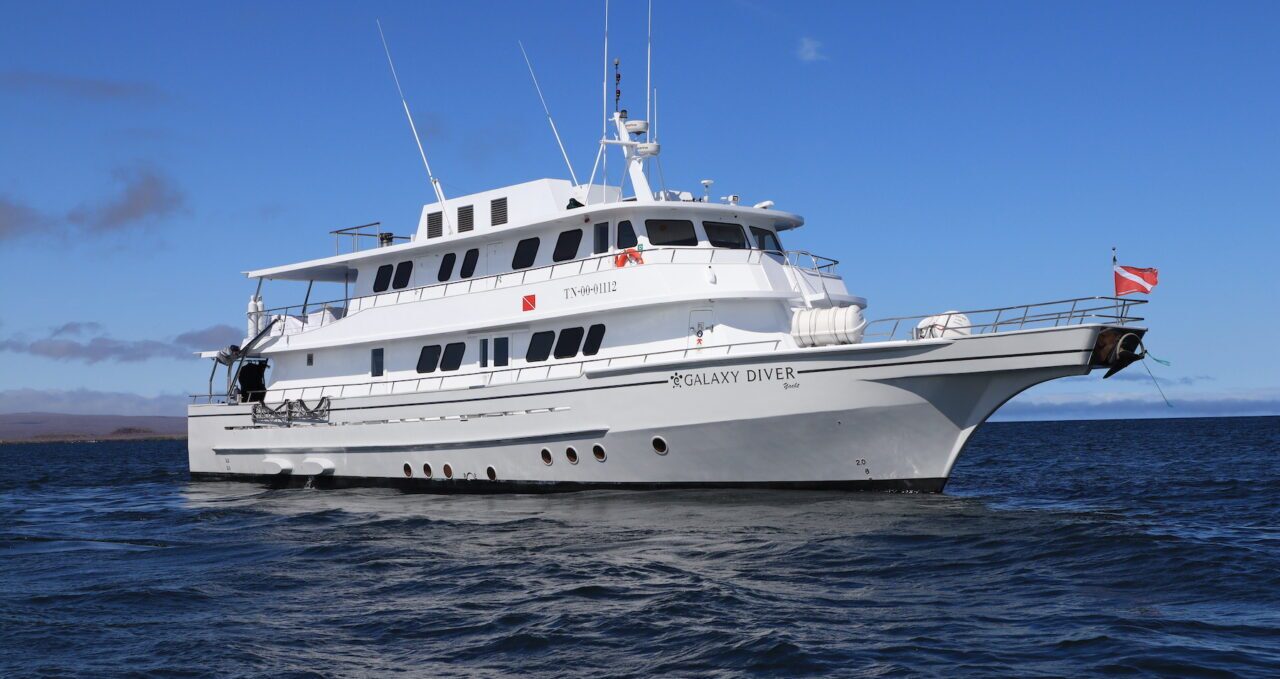
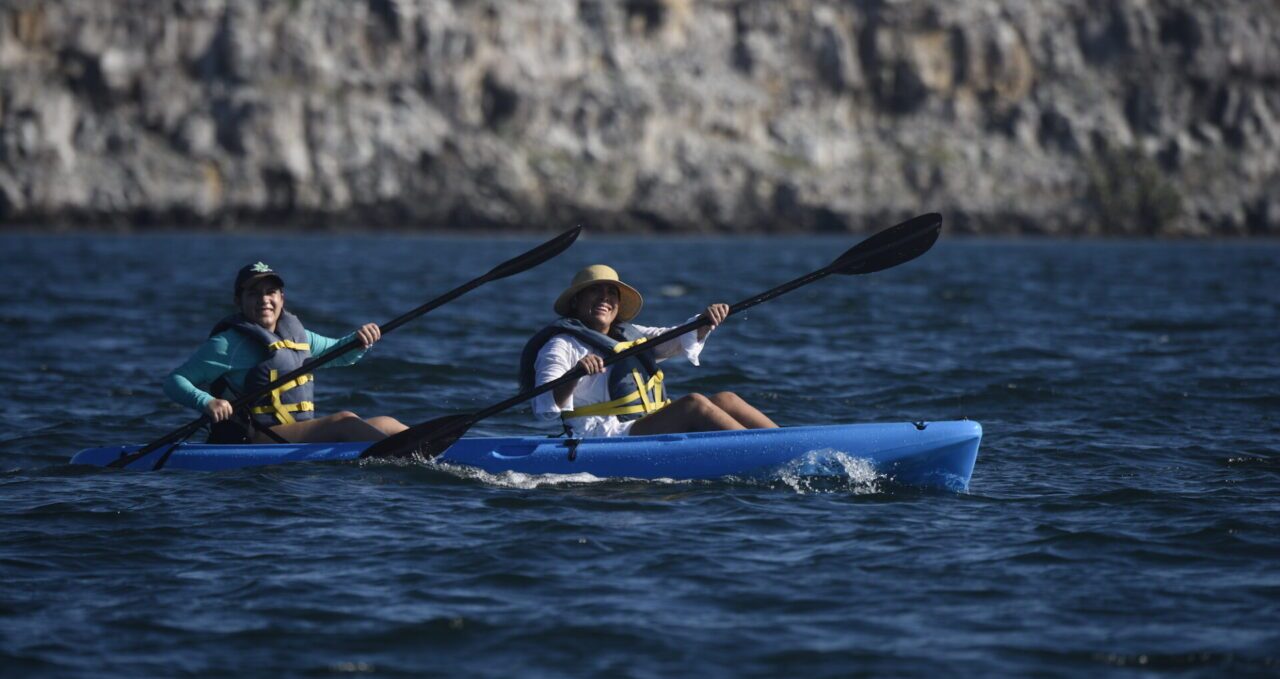
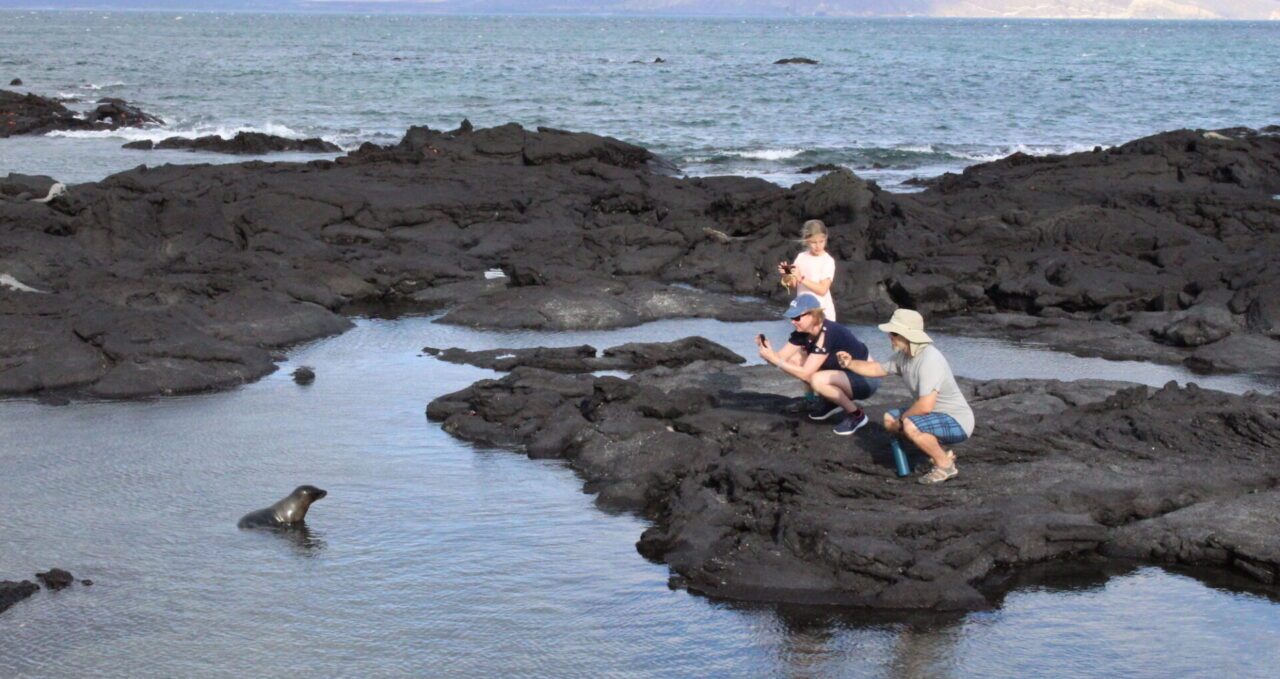
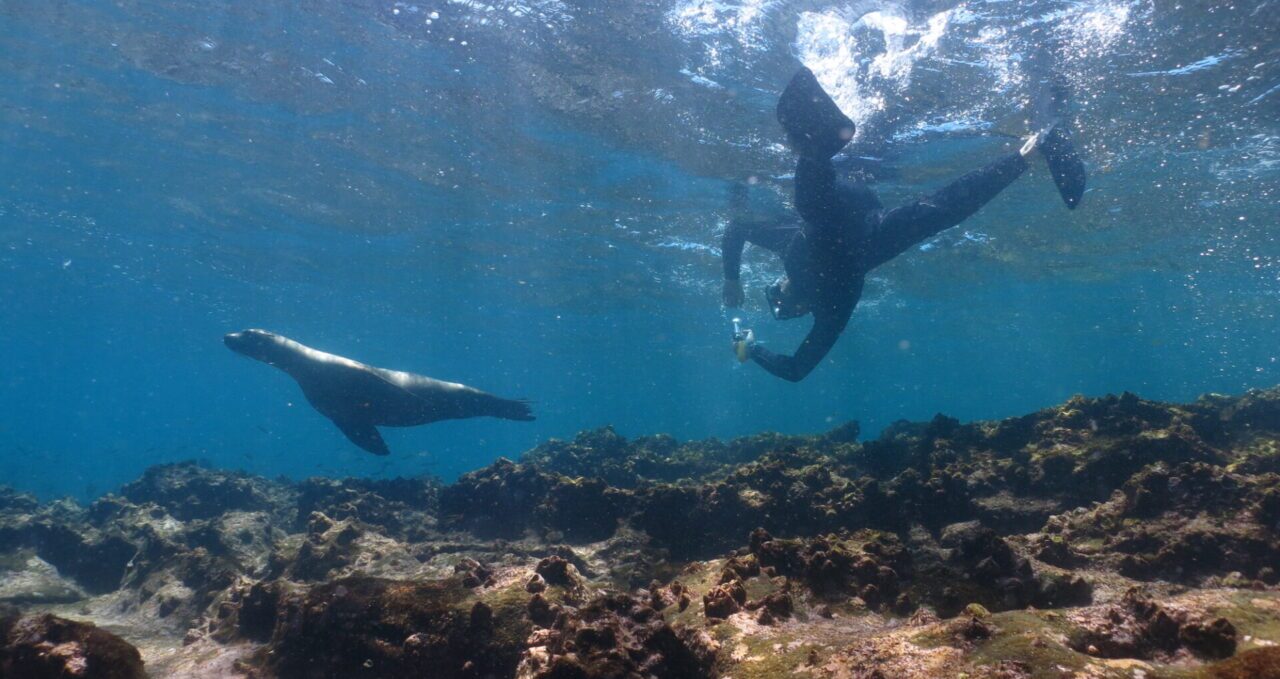
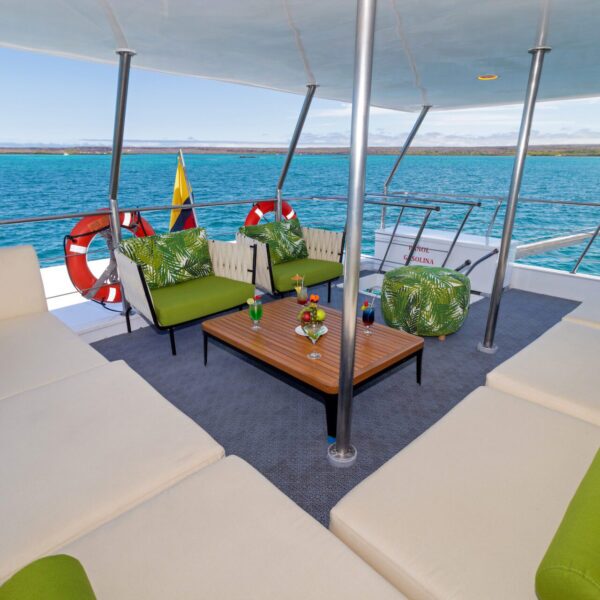
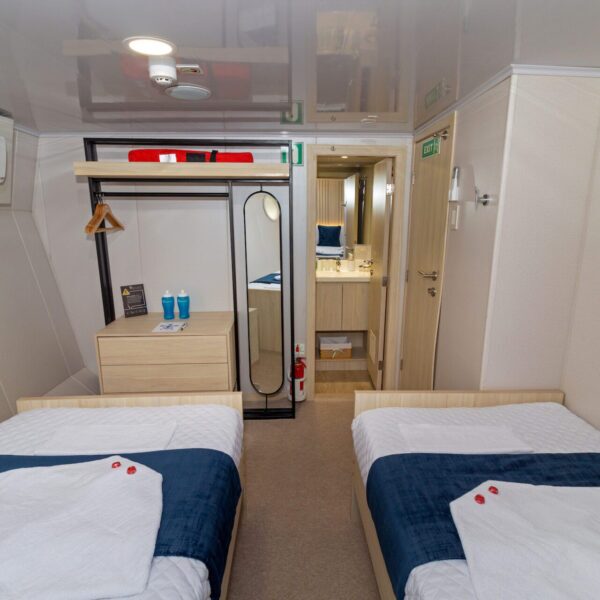
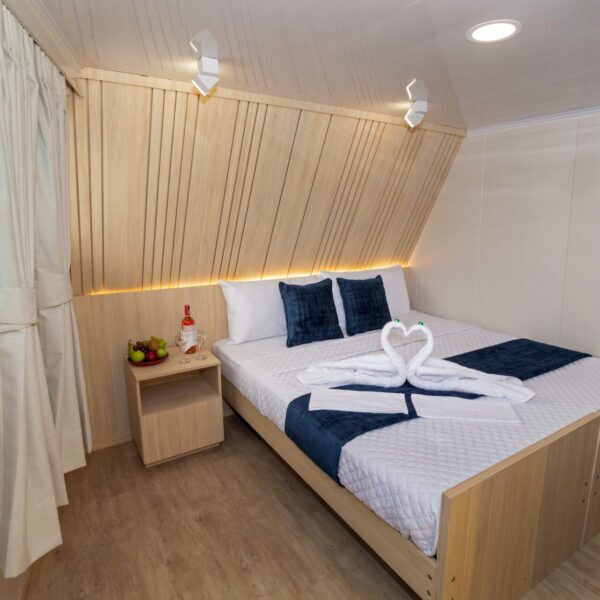
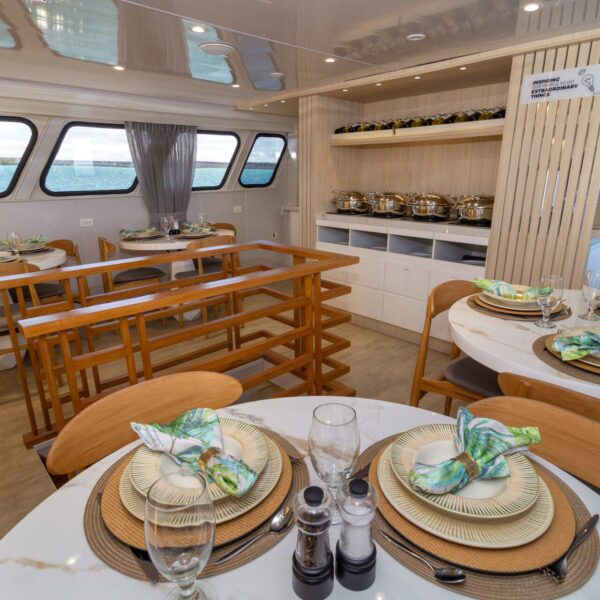

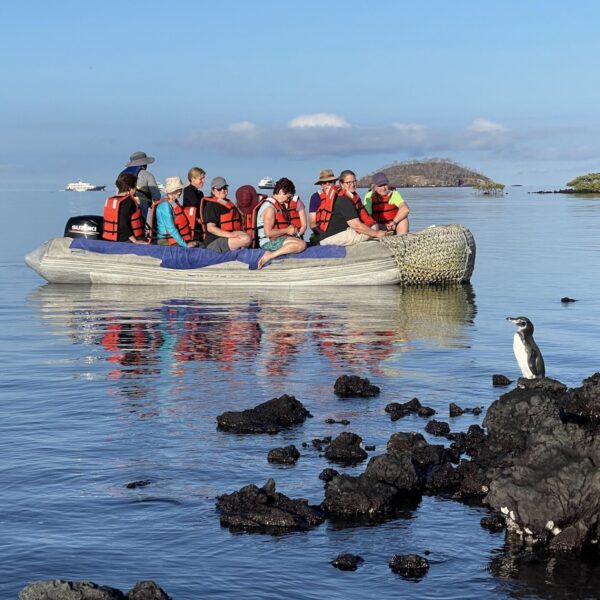
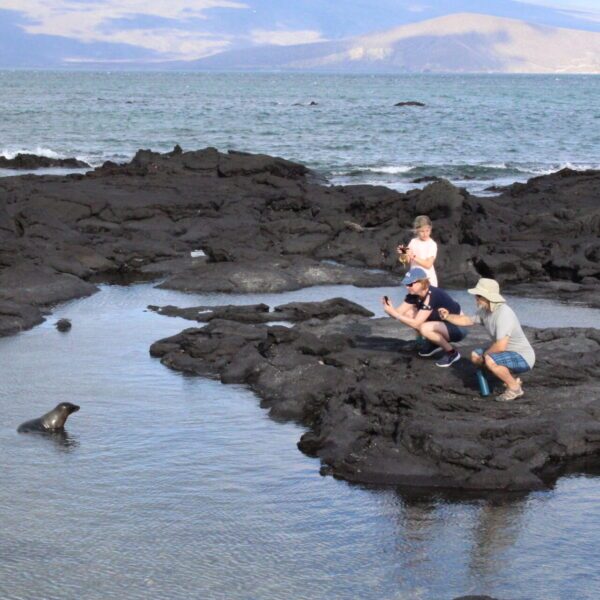
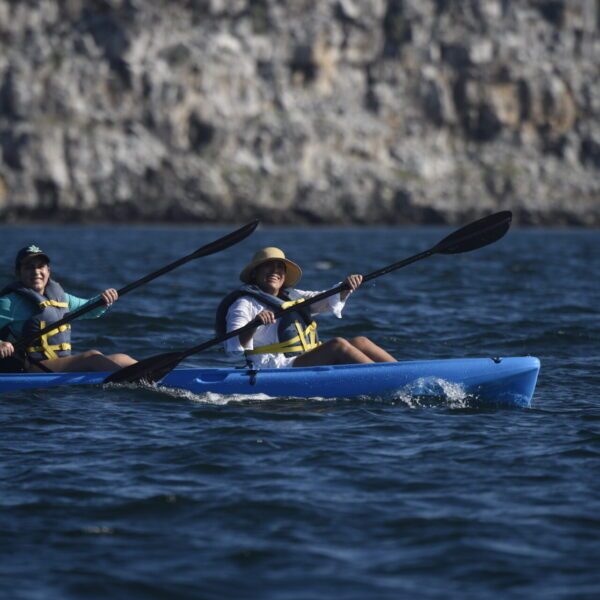
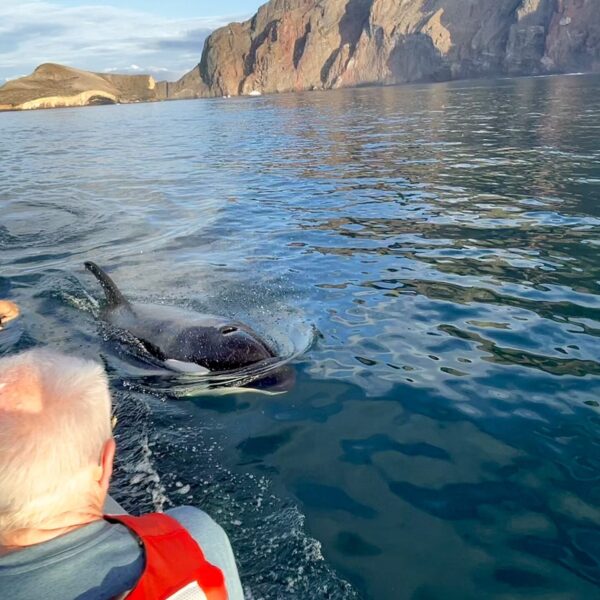
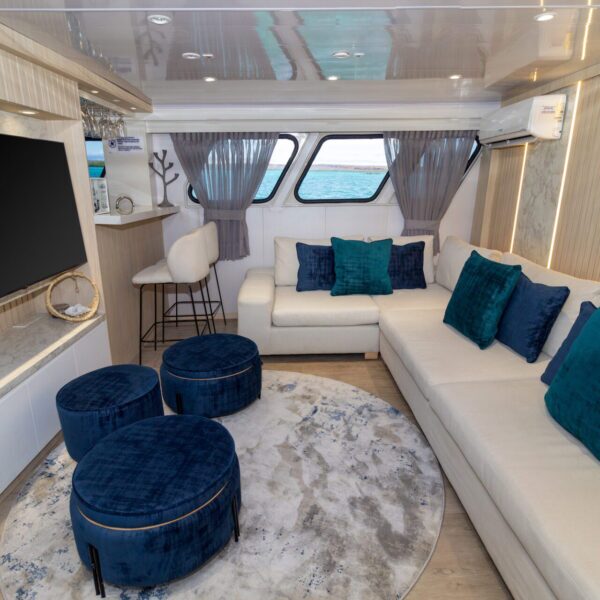
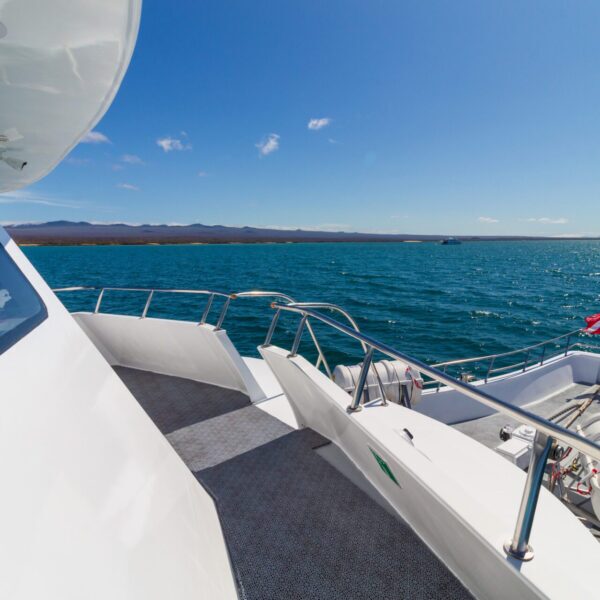
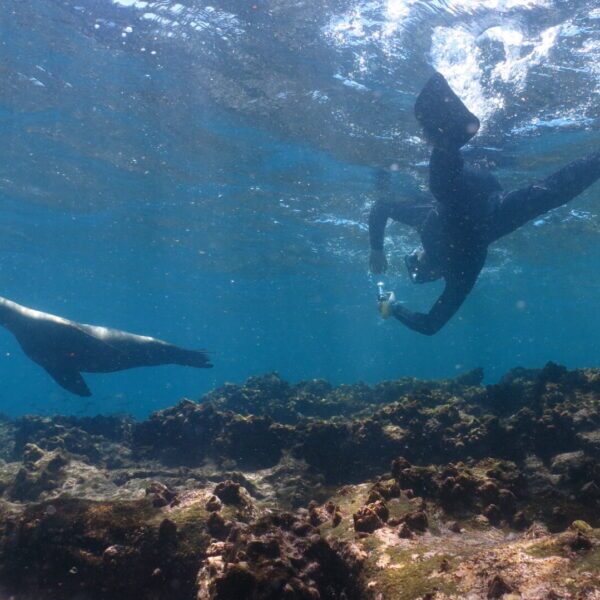
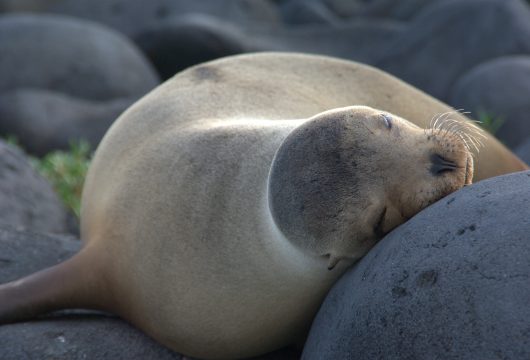
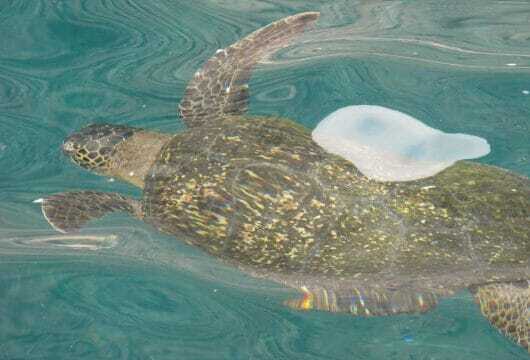
 a Group Tour
a Group Tour 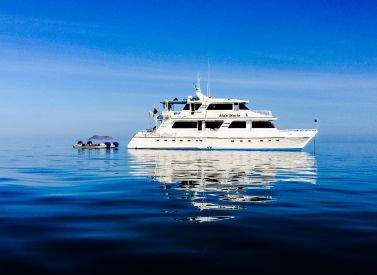
 a Tailor Made Tour
a Tailor Made Tour 